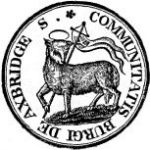THE DEFENCE OF THE BRISTOL CHANNEL IN WW2
Following the AGM on April 16th the last talk of the season was delivered by Chris Webster, co-author of ‘Somerset and the Defence of the Bristol Channel in the Second World War’ by Dawson, Hunt and Webster (SANHS 2011).
He began by explaining the strategic importance of the West Country and the Bristol Channel in the defence of the nation. Maritime trade is of crucial importance to the maintenance of supplies and in 1940 a tenth of British imports were coming through the Bristol Channel ports. Somerset harbours, although relatively minor, take on a much greater significance if viewed from the perspective of forming the southern flank of an important waterway giving access to the ports of South Wales, the port of Bristol and a network of waterways leading to the heart of the Midlands. The early concerns were therefore to defend the sea ports and keep the seaways open.
In 1940 however, the Germans occupied northern France and suddenly the West Country, which, inland at least, had been seen as a safe haven away from London, became vulnerable to invasion. Efforts were made to second guess German intentions and attacks were feared from both sea and air. Somerset beaches were feared to be suitable landing strips for aircraft as well as being vulnerable to sea born invasion. The open spaces on the high ground of both Exmoor and the Brendon Hills could likewise be used for landing aircraft and for parachute drops.
Plans were hurriedly drawn up to thwart any possible German plans and the necessary defences were installed. These defences formed the basis of Chris’s talk.
The Bristol Channel was fortified by the construction of gun batteries at Lavernock in South Wales, Flat Holm, Steep Holm and Brean Down forming a chain across the Bristol Channel to protect the area upstream.
The beaches were all protected with anti-tank obstacles and barbed wire although little evidence of this exists today. Pillboxes were also built to prevent movement inland from the beaches and some of these still exist. For example one can be found on Dunster Beach.
Inland from beaches a series of ‘stop-lines’ was devised primarily as anti-tank devices to impede enemy movement. They connected a series of features such as waterways, escarpments and ditches that in themselves were an obstruction to movement and into them anti-tank obstacles were incorporated turning the stop line into a significant barrier. Many also included sufficient defences to prevent infantry activity. The two most important were the Taunton Stop Line and the GHQ Stop Line.
The Taunton Stop Line ran from Burnham-on-Sea south across Somerset and Devon to Seaton on the south coast and its aim was to prevent movement out of the West Country should the Germans have gained a stronghold in the west.
The GHQ Stop Line ran east from Burnham-on-Sea and was the more important of the two lines. It was intended as the final line of defence to keep the invader from reaching London and the industrial heartland in the Midlands.
The focus of significant road networks such as Bristol, Taunton and Exeter also had independent anti-tank defences and were referred to as anti-tank islands. All roads into these towns were heavily defended with roadblocks to prevent their use by the enemy.
Airfields such as Yeovilton and Culmhead (Churchstanton) were built from which the area could be defended and these airfields were in turn protected both from land attack and from enemy airborne landings. Guns on the perimeter pointed both ways, into the airfield in case of enemy landings and out from it to protect from enemy tanks should that be necessary.
On Axbridge Hill, a relatively small plateau, a series of ridges was constructed to prevent aircraft from landing.
Bombing decoys or fake cities were set up to confuse the enemy and divert bombing raids away from important sites. Three types of decoy were designed a Q5, QL and SF. A Q5 decoy was a simulated burning city, a QL a simulated badly blacked out city and starfish or SF was a special fire site, an enlarged version of a Q5. Locally a decoy site exists on Blackdown where the ground surface was altered and illuminated to mimic the layout of the British Railway Network in Bristol by night.
Finally, preparations were made for non-fighting roles. These included the building of the Royal Ordnance factory at Puriton where explosives were made, the Hydrographic Office in Taunton that produced essential maps and the Reserve Depot at Norton Fitzwarren where ration packs for the army were put together.
There were also preparations made for the returning wounded with hospitals being established at Hestercombe House in the Quantocks, Sandhill Park at Bishop’s Lydeard and Musgrove Park in Taunton. R.A.F. Merryfield became the receiving station for wounded Americans.
This account represents only a tiny amount of the information imparted by Chris Webster in his talk and available in the book. But, the research published in the book preserves for all time the story of how Somerset prepared for an invasion and how, should the preparations have proved necessary, it would have resisted the advance.
In the event, the Germans had no invasion plan for the south-west. Their only plan, Operation Sea Lion, focused on an invasion in the south-east of the country.
The talk was well attended and attracted a number of visitors.
Madeleine Roberts.
